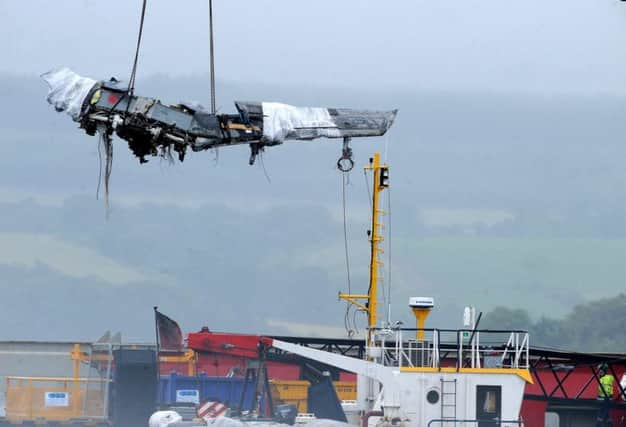Cuts blamed for putting RAF crews’ safety at risk


The report for 2012-13 – which is eight months overdue – also highlighted that the greatest danger to air safety in the UK is in mid-air collisions. It comes after safety concerns following the collision between two Tornados in July 2012 over the Moray Firth in which three airmen lost their lives.
The MAA – set up after a Nimrod crashed in Afghanistan in September 2006, killing 14 personnel – accepted that the RAF and Ministry of Defence have made improvements. But it was able to offer only “limited assurance” as an overall assessment of safety because of “the widespread shortage of SQEP [suitably qualified and experienced personnel]”. Limited assurance means that while the system of internal control is operating effectively, weaknesses have been identified.
Advertisement
Hide AdAdvertisement
Hide AdThe lack of suitable personnel has been seen as a result of the UK government’s redundancy programme. More than 5,000 skilled personnel in the RAF have lost their jobs as the MoD deals with huge budget cuts.
The MAA report notes that the mid-air collision of the two Tornados in Scotland is likely to go to a fatal accident inquiry. It also states that such incidents are a significant threat in the skies over Afghanistan.
The SNP has analysed official figures from the MoD and the Civil Aviation Authority between 1998 and 2012. It found there have been 361 “airprox” incidents in which a Tornado jet flew too close to another aircraft – of which at least 46 were the most dangerous “Risk category A”, where a serious risk of collision occurred. In at least eight instances, two Tornados flew too close to each other.
Angus Robertson MP, the SNP Westminster leader and defence spokesman, said: “This eight-month late annual report is damning about air safety across the MoD. It is unacceptable that mid-air collisions, like the one over the Moray Firth two years ago, remain the highest safety risk.
“Vital collision warning systems trialled as early as 1996 on the Tornado remain uninstalled and other jets, like Typhoon, don’t have them either.”
“Combined with a severe shortage of qualified personnel because of brutal defence cuts only makes this risk worse. More must be done immediately and ministers must explain why some seven years after the tragedy of Nimrod XV230 air safety can only be given a ‘limited assurance’ rating.”
Mr Robertson has been questioning why a collision warning system that can be bought off the shelf has not been introduced and why the UK is still waiting for one to be developed.
It has been claimed that had a warning system been in place, then the accident in 2012 could have been avoided. However, MoD sources insisted that the problem is that most aircraft – including gliders – do not have warning systems, so the threat of mid-air collisions would only be marginally reduced if one was installed on fighter jets.
Advertisement
Hide AdAdvertisement
Hide AdThe MoD also said that it is addressing the shortfall in suitably qualified and experienced personnel by advertising to recruit 1,300 people to fill business critical posts, including engineering, programme management and quality assurance. It added that it intends to take on more personnel to work in air safety roles.
An MoD spokesman said it “welcomes the MAA report, which recognises that the MoD has made significant progress in a number of areas. Air safety is at the core of all MoD aviation activity and we take very seriously our obligations to ensure that our activities are as safe as reasonably practicable, nevertheless, we accept that there is further work to be done.”